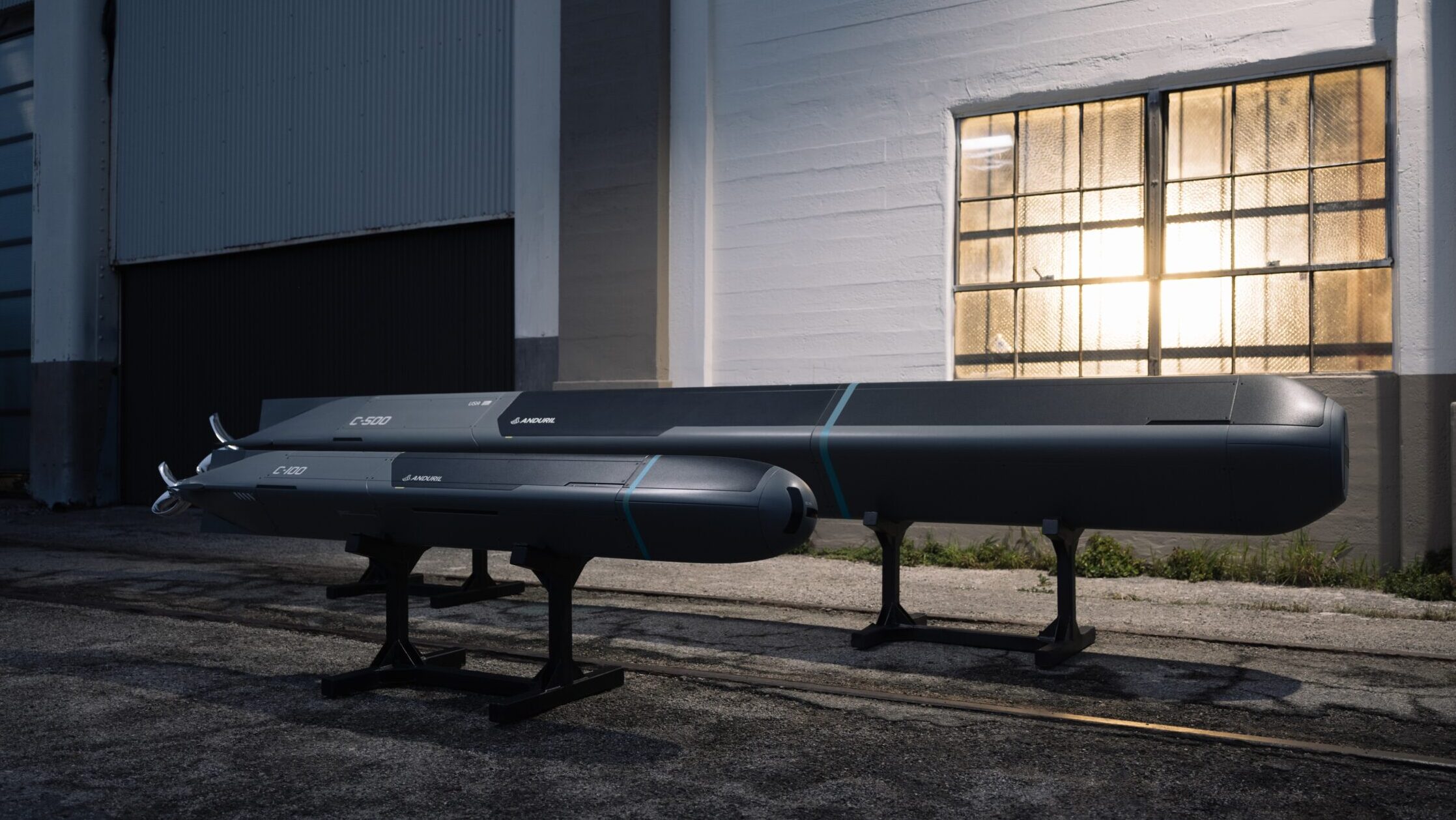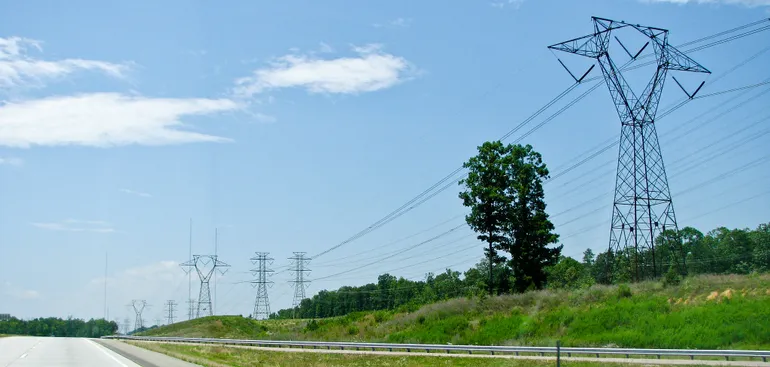Amazon airline prioritizes bigger aircraft to handle third-party cargo
Amazon has restructured its air network to accommodate the need for fewer short-haul package flights and a new clientele of shippers with heavy freight. The post Amazon airline prioritizes bigger aircraft to handle third-party cargo appeared first on FreightWaves.

Amazon’s in-house cargo airline has reduced short-haul flying and focused on larger aircraft and multiple hubs to align with the company’s regionalized fulfillment model and new push into third-party air shipping that involves bulk shipments instead of small parcels, according to a report published Monday.
Over the past two years, Amazon Air (NASDAQ: AMZN) has undergone significant change with the addition of its largest aircraft, greater reliance on overnight package flying, hub expansion at airports beyond Cincinnati/Northern Kentucky International Airport (CVG), an analysis from the Chaddick Institute for Metropolitan Development at DePaul University found. Not to be forgotten, is the break up with Atlas Air as a major contractor.
The moves allow for greater efficiency and support the retailer’s new line of business selling excess air cargo capacity to logistics companies, online retailers and postal services.
The DePaul research team, led by Professor Joseph Schwieterman, used publicly available federal transportation and census data, flight tracking websites, and geospatial analysis to examine how Amazon Air’s operations have continued to evolve.
In September, Amazon, which outsources fleet operations to other carriers, fully began offering a wholesale air cargo service and accepting bookings for heavy shipments, putting it in competition with FedEx, UPS and domestic airlines like Southwest, Delta, United and American. It also is considering using aircraft for charter flights and dedicated transport.
Amazon was incentivized to pursue containerized freight from unaffiliated companies to help balance traffic flows and offset overhead costs at key hubs, where many inbound cargo jets fly substantially empty, according to the DePaul report and parcel industry experts. During the past two years, the retail giant has been more cautious about growing the air network as e-commerce sales normalized and it shifted to a regional fulfillment model that places inventory closer to customers and relies more on trucks than air for middle-mile transport. The logistics restructuring left the air network with more capacity than it needed and led management to offer space to the broader freight market.
The growing average payload of Amazon Air’s planes, its emphasis on long-haul flying and the decision to increase the network’s density rather than airport destinations have positioned the retailer to haul the nonparcel freight, the report said. The network is suited for second-day deliveries of general airfreight, but isn’t large enough for next-day delivery, the researchers said in November.
Since mid-2023, Amazon Air’s priorities have changed from expanding the air network and use of small aircraft to more of a hub-and-spoke model with less point-to-point flying. The network is geared more toward maximizing capacity utilization on hub routes. Toward that end, the logistics unit has dropped five U.S. airports, discontinued use of turboprop aircraft and turned to larger planes.
Amazon Air’s tonnage capacity has increased 14% in the past year, primarily due to the addition of 10 Airbus A330-300 freighters. The planes have 17% more payload by weight and 6% more volume capacity than the Boeing 767 medium widebody cargo jets that dominate Amazon’s fleet. More than three-fourths of its total carrying capacity is now on widebody aircraft, a sharp increase from three years ago. Capacity is still up 7% year over year when idle planes are excluded.
“These shifts augment Amazon’s expanding push into third-party shipping. Larger
planes give the retailer more room beyond internal needs and facilitate bulk shipments. The revenue potential from large inbound shipments to its busiest hubs is particularly attractive,” the DePaul study said.
Amazon tends to carry more outbound cargo from its primary air hubs because of the number of parcels originating in warehouses clustered near them and its deliver-only, no pick up package delivery model.
Global flights have held flat at about 200 per day even though the company has increasingly gravitated toward using trucks over air for short routes. In the U.S., the proportion of flights with distances under 400 miles has been more than halved in the past two years and now accounts for just 5.1% of the total, according to the report. In Europe, flights over 1,000 miles surged from 4.2% in 2023 to 35.3% in 2025, while the proportion under 400 miles dropped slightly.
The airline has also moved to spread activity beyond the CVG hub, which experienced a modest decline in flight arrivals and departures over the past year to 56 per day. Even so, it now has more long-haul and nocturnal flying and is a focal point for the A330s. Meanwhile, flight activity grew sharply in several other regions.

A three-airport cluster comprising Amazon’s Western hub at San Bernardino airport, Ontario airport and March Air Reserve Base in California saw flight activity grow from 34 to 40 average daily flights year over year, the researchers said. The airports are less than 75 miles from the ports of Long Beach and Los Angeles, making them potential transshipment points to inland distribution centers. San Bernardino has regular A330 flights connecting it to CVG and New York.
Amazon plans to exit March Air Reserve Base later this year.
Amazon Air is again focusing on Baltimore-Washington International Airport, its largest hub during its infancy, allowing it to better serve the mid-Atlantic region up to New Jersey. Amazon Air’s strategy in the Southeast has also shifted, with flights to Lakeland, Florida, declining while flights to larger commercial airports in Atlanta and Miami have increased.
Enhanced next-day parcel delivery
Amazon in the past 12 months has also increased late-night flying in the U.S. by more than a third, putting nearly 96% of the mainland population within 250 miles of an airport with early morning arrival or one-day trucking distance from its national package sortation hub, or its satellite facility in nearby Wilmington, Ohio, according to the study. Early morning arrivals help the retail and logistics giant meet next-day delivery commitments. Forty-one percent of Amazon flights each week now operate between the hours of 10 p.m. and 6 a.m.

Much of the growth in overnight flying is at Cincinnati/Northern Kentucky airport. Amazon has added new long-haul routes for Minneapolis; Portland, Oregon; and Richmond, Virginia, while dropping Boise, Idaho, and several flights to closer destinations easily reachable by truck. The airline has more tightly clustered overnight departures in a 45-minute window shortly after midnight, with 13 flights scheduled during the period. Other hubs have also added or expanded departure flights in the middle of the night, a trend that is likely to continue.
European network
In Europe, Amazon has scaled back air operations by more than two-thirds since 2022 and moved back to point-to-point flying instead of a hub-and-spoke model. It has 12 daily flights, operated by vendor ASL Ireland with Boeing 737-800s, concentrated in northern Europe.
Amazon Air’s fleet size and mix, which includes standard-size Boeing 737-800s, will change little over the next several years, but increasing utilization and reactivating parked aircraft will allow for another capacity boost, Schwieterman’s team predicted.
Although Amazon Air’s fleet grew from the low 90s to about 100 over the past year, around a dozen planes are parked, including two newly received A330s, according to fleet databases.
Amazon last year exited a contract with Atlas Air, a major cargo airline, and transferred 10 leased Boeing 767-300 freighters to ABX Air to operate on its behalf. It is in the process of placing control of eight 737-800 freighters operated by Atlas with Sun Country Airlines. Hawaiian Airlines provides crews and maintenance for Amazon’s A330s.
The researchers project Amazon Air’s flight utilization to grow by 3% to 4% this year, although that could change if growing fears of a recession materialize.
Click here for more FreightWaves/American Shipper stories by Eric Kulisch.
Write to Eric Kulisch at ekulisch@freightwaves.com.
RELATED STORIES:
Sun Country expects to double cargo revenue with Amazon fleet additions
21 Air makes debut cargo flight for Amazon
Amazon concentrates parcel freighters at US hubs, report says
The post Amazon airline prioritizes bigger aircraft to handle third-party cargo appeared first on FreightWaves.













































































































































































.jpg)








